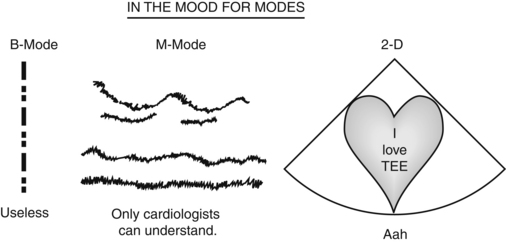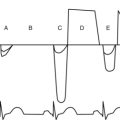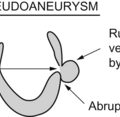Principles of Doppler Ultrasound
Jonathan Kraidin, Steven Ginsberg, William Jian and Kevin A. Jian
Doppler works with sound. Sound is a mechanical, longitudinal wave that alternates between expanding and compressing the medium through which it propagates. This is analogous to a wave moving through the water. Normally, the ear perceives sounds up to 20 KHz. Higher frequencies are referred to as ultrasound, and unless you are a dog or bat you are not going to hear them. The rapid vibration of a piezoelectric crystal produces the ultrasound waves. The properties that describe the wave are1:
1. the period is the duration of each cycle
2. the frequency is the number of times the waves cycle per second (this is the reciprocal of the period)
3. the wavelength is the distance between two wave crests of the sinusoidal wave
4. the propagation speed, which is the speed the wave travels through the medium as it compresses and expands
Doppler echocardiography allows the non-invasive assessment of blood flow, velocity and direction.2 It is based on the principle that a moving target will shift the reflected frequency higher or lower depending on whether it is moving toward or away from the transmitter. Using this principle, if one knows the frequency shift one can determine the velocity and direction of the blood flow.
You can see the derivation of the Doppler Shift equation in the section, Derivation of the Doppler Shift Equation.
The Doppler Shift Equation
For a returning signal the equation is:
Let us break this equation down:
Let’s look at some real numbers:
How is such a small change in the frequency measured? The truth is that the frequency is not measured. The machine actually measures the phase shift between the outgoing and incoming signal. The phase difference correlates with the Doppler shift as a first-order approximation.3
Basic Principle for Tissue Reconstruction Using Ultrasound
A sound wave is emitted from the transducer. When this wave encounters differences in density it gets reflected back. If you scream over the ocean shore you don’t hear your voice reflected off of the air because it has a constant density. If you scream across a canyon you hear an echo because the sound encounters a change of density when it hits the rocks, resulting in the sound getting reflected back. The amount of sound that gets reflected not only depends on the change in density at the interface, but on the orientation of the object. The orientation can scatter the sound in different directions. Software analyzes the amplitude of the sound at different times in order to reconstruct the tissue density at a specific depth from the probe, giving an image.
Continuous Wave Doppler

How does this help if the machine is getting back a myriad of velocities? One uses CW when there is an interest in measuring fast velocities. True, all of the velocities are mixed together, but the operator only cares about the fastest velocity. The peak of the envelope represents the fastest velocity; everything inside the envelope represents all other velocities, which one ignores. For example, if one is looking at a stenotic aortic valve, the jet of blood traveling through the valve will give the fastest velocity. Even though the CW Doppler does not know where the fastest velocity is coming from, the operator knows the fastest velocity measured must be coming from the jet going through the stenotic valve.
Range Ambiguity
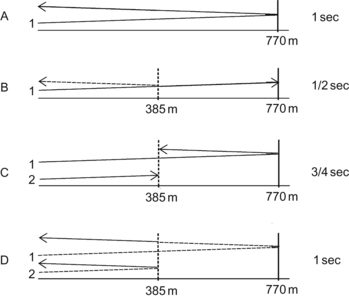
A: Sound sampled at 1 sec will obtain information about an object 770 m away.
B: If there is an object of interest 385 m away, information about the object will be available 0.5 sec after it was sent out. Some of the sound that had continued forward will hit an object at twice the distance.
C: After the first pulse is received a second pulse is sent out. The new pulse and traces of the first pulse reach the midway object at the same time.
D: Both pulses arrive back at the receiver at the same time. Which one has information about the midway object? This is range ambiguity.
Nyquist Limit and Aliasing
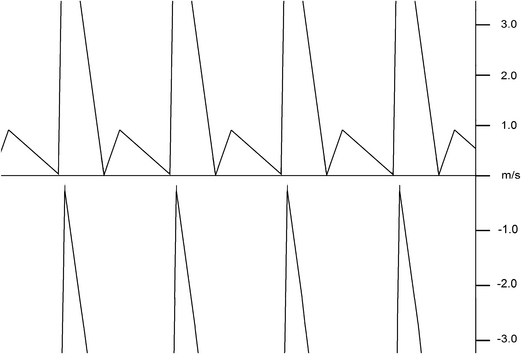
The figure is the strange-looking effect from not taking enough samples. Remember seeing a rotating wheel appear to spin backwards? Remember the song: “the wheels on the bus go round and round…”. Well, the bus wheels sometimes appear to spin in reverse. Let’s analyze this by referring to the figure of a spinning wheel, where the top spoke is marked (see figure below).
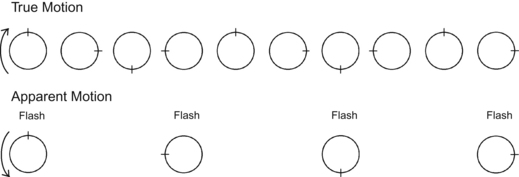
HPRF (High Pulse Repetition Frequency) Mode3
Sometimes one wants to know a velocity at a specific location, but the velocity is too high to get a true reading. What can one do? Many echo machines have a HPRF mode that allows one to exceed the Nyquist limit. It does not have a range as high as CW, but it is higher than plain PW. How does it do it? Pulses are sent out before the time is reached to send out the next allowed pulse. If the object is 770 meters away we normally have to wait 1 second before sending another pulse so we are sure it is an echo from that distance. If we send a pulse every ½ second we can measure twice the shift frequency. The downside is that there is some range-ambiguity: one will get a mixing of the velocity at two locations, shown by two cursor location markers.
Beam Angle
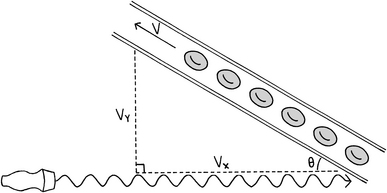
(WARNING: Math alert! Proceed with caution!)
Derivation of the Doppler Shift Equation
We are going to derive the shift equation in order to get a better understanding of it.
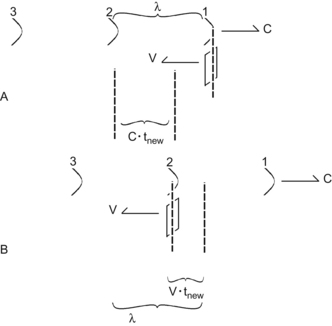
tnew is the faster time that it takes for our object, moving at speed v, to hit the next crest.
Now imagine that you let the balls bounce off a board that you are holding. If you are standing still the balls will travel away from you at the same frequency as when they were coming towards you. The spacing between each ball will also be the same. If you are walking towards the incoming balls, and they bounce off a board you are holding, they will not move away from you as quickly as when you stood still. This is because you are walking toward the ball as it recedes from you. So not only has the distance between each oncoming ball decreased because you are walking towards them (first Dopper shift), but the distance decreases even further for the reflected balls because you are walking toward the balls as they move away (second Doppler shift). We can derive a mathematical relationship demonstrating this fact.
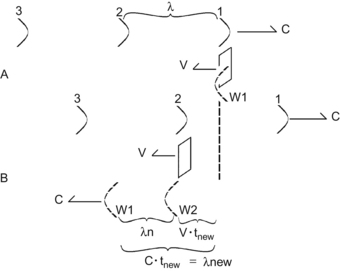
Derivation of the Nyquist Limit for PW Echo
Carrier frequency = f, speed of sound = c, velocity measured = v
Time required for travel to and from a point at a fixed distance:
We derived the Doppler shift equation earlier: Fshift = (2fv/c) * cos(θ). So,
What we see is that the maximum velocity we can determine decreases as the measured point is further away from the transducer or the carrier frequency increases. Now if you read all of this you deserve a candy bar break. Go ahead, you earned it.
Questions (Doppler Physics)
1. The speed of sound in body tissue is approximately:
2. The equation that relates the speed of sound (c), frequency (f) and wavelength (λ) is:
3. If the Doppler beam makes an angle of θ with the moving blood, the measured velocity is less than the true velocity by what amount?
True or False
6. The Nyquist Limit increases as the scanning depth decreases
7. Pulse wave Doppler measures all velocities along a line of sight
8. Continuous wave Doppler is used to measure fast velocities
9. The Nyquist Limit is the highest frequency one can use to measure the velocity
10. Color Doppler shows blood flow, represented by color, superimposed on a 2D image
Answers
1. D. The average speed of sound in tissue is 1540 m/sec
2. A. You can solve this by looking at the units: speed (m/s) = wavelength (m) × frequency (1/sec)
3. C. The measured velocity will be less than the true velocity by cos(θ)
4. B. HPRF is used with PW Doppler and allows you to measure faster blood velocities
5. D. The correction factor, cos(θ), becomes significant when the angle is greater than 20 degrees
6. True. When the scanning depth decreases, it takes less time for the sound to travel back
7. False. PW Doppler measures velocity within a specific volume
8. True. The measurement of fast velocities is the benefit of CW Doppler
9. False. The Nyquist Limit is the fastest velocity one can measure, not frequency
10. True. Color Doppler shows blood velocity, represented by colors, on top of the 2-D image




